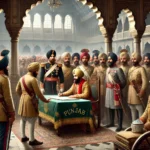PAK YATRA is a tour operator company providing tour services and facilitates Sikh community from different parts of the world.
Chaqchan Mosque: A Testament to Cultural Fusion and Architectural Splendor
Historical Significance:
Dating back to 1370, the Chaqchan Mosque situated in Khaplu, Gilgit-Baltistan, stands as one of the oldest mosques in the region. Its construction coincides with a significant period of history, symbolizing the mass conversion from Buddhism to Islam during that era.
Architectural Marvel:
The mosque’s architecture is a testament to cultural fusion, blending Tibetan, Persian, and Mughal styles. Its design showcases intricate craftsmanship and reflects the diverse cultural influences prevalent in the region. The use of wooden slabs, clay, and mud in construction highlights ancient building techniques tailored for the harsh winter conditions of the area.
Historical Evolution:
The mosque’s construction is attributed to various sources, with some attributing it to Mir Sayyid Ali Hamadani, a religious preacher, and others to Sufi saint Syed Nurbakhsh. However, historical evidence suggests that it predates the birth of Syed Nurbakhsh, indicating a more plausible construction by Mir Sayyid Ali Hamadani.
Cultural Heritage and Preservation:
Recognized as a Pakistan National Heritage Site, the Chaqchan Mosque has undergone extensive preservation efforts to maintain its original charm and historical integrity. Conservation initiatives have focused on protecting its unique architectural style, reminiscent of Roman opus criticism, reflecting the region’s rich heritage and the ingenuity of past civilizations.
Distinctive Features:
The mosque features a two-story cubic complex with a semi-basement and a ground floor topped with a turret. Intricate wood carvings adorn both the interior and exterior, showcasing the mastery of craftsmanship prevalent in ancient times. The presence of balconies and smaller windows reflects architectural considerations for climate and ventilation.
Location and District:
The Chaqchan Mosque is located in Khaplu, a picturesque town in the Gilgit-Baltistan region of Pakistan. Situated amidst breathtaking natural landscapes, it serves as a cultural and historical landmark in the district.
Preservation Efforts:
Efforts to preserve the Chaqchan Mosque have been ongoing, with conservation initiatives aimed at maintaining its architectural integrity and historical significance. These efforts emphasize the importance of embracing and celebrating indigenous architectural traditions, ensuring that the mosque continues to serve as a reminder of the region’s glorious past for future generations.
Historical Significance:
The Chaqchan Mosque stands as a timeless monument to architectural splendor, blending cultural influences from Tibet, Persia, and Mughal India. Its historical significance, unique design, and cultural heritage make it a must-visit destination for enthusiasts of history and architecture, serving as a bridge between the past and the present in the Gilgit-Baltistan region.




